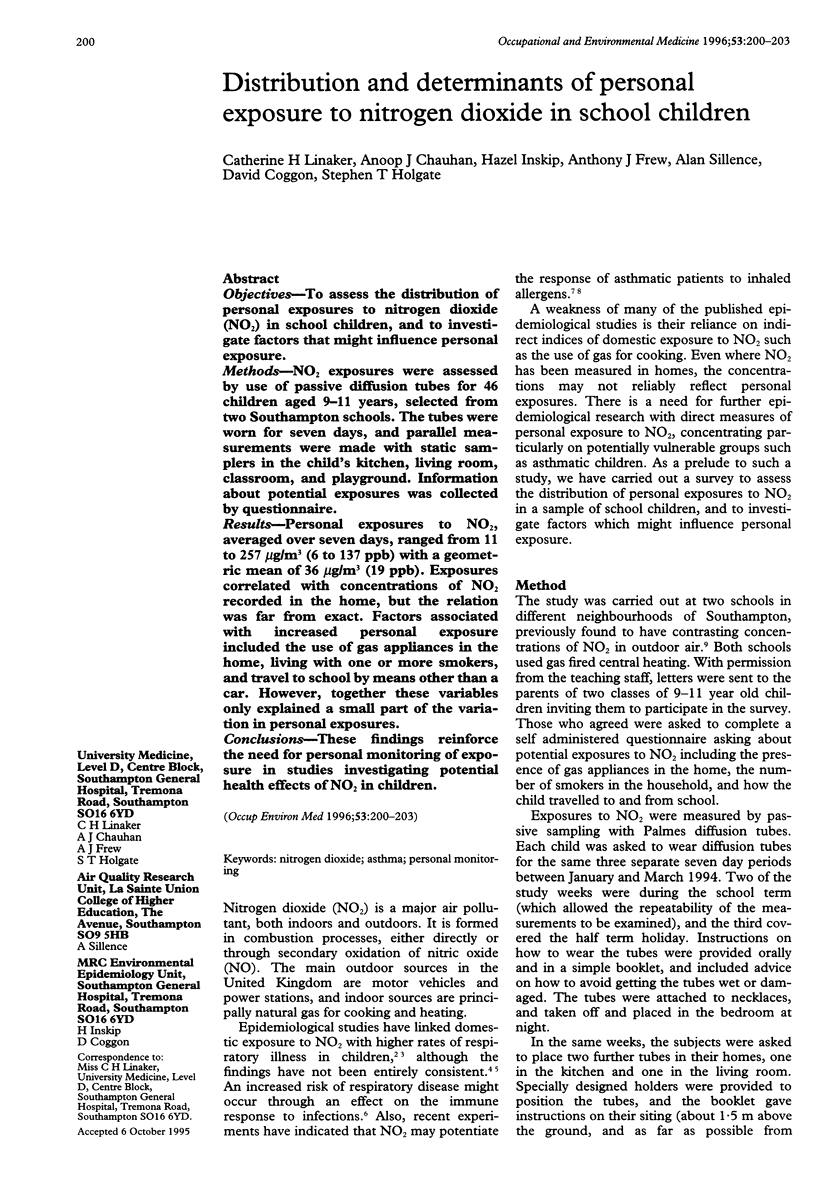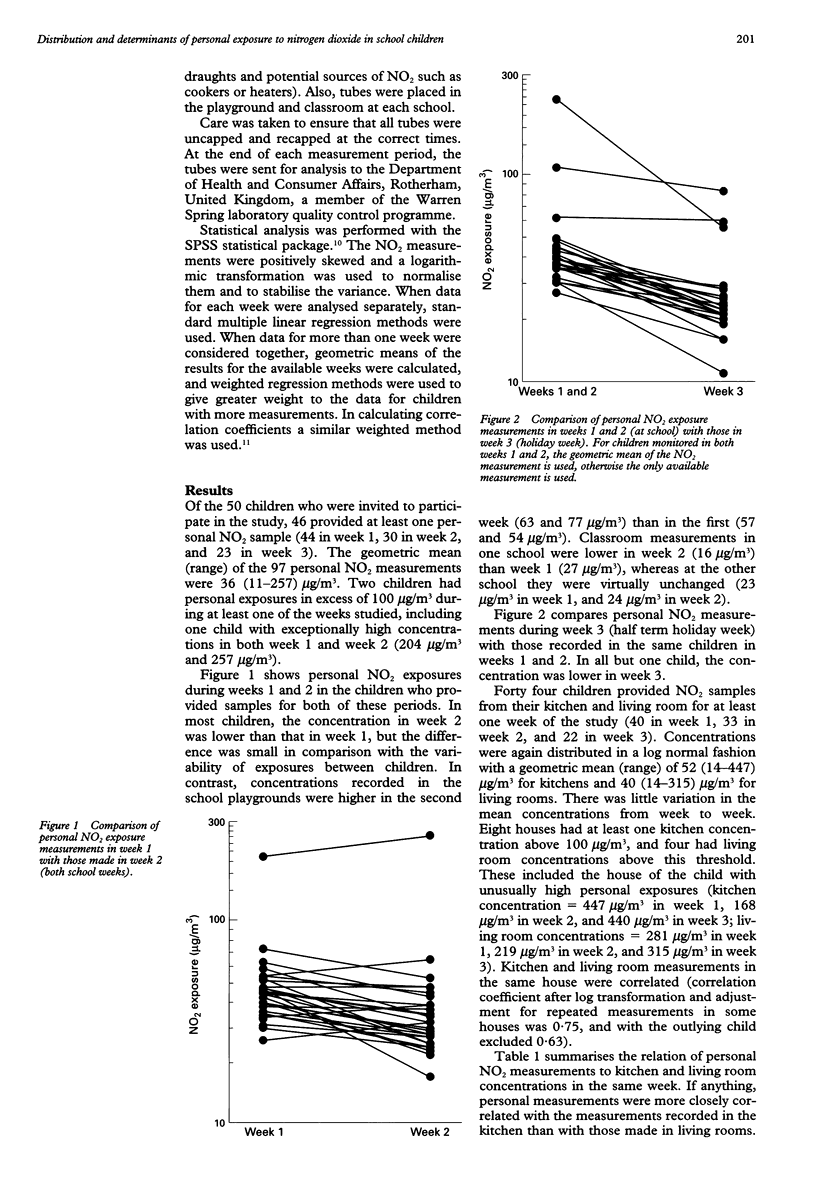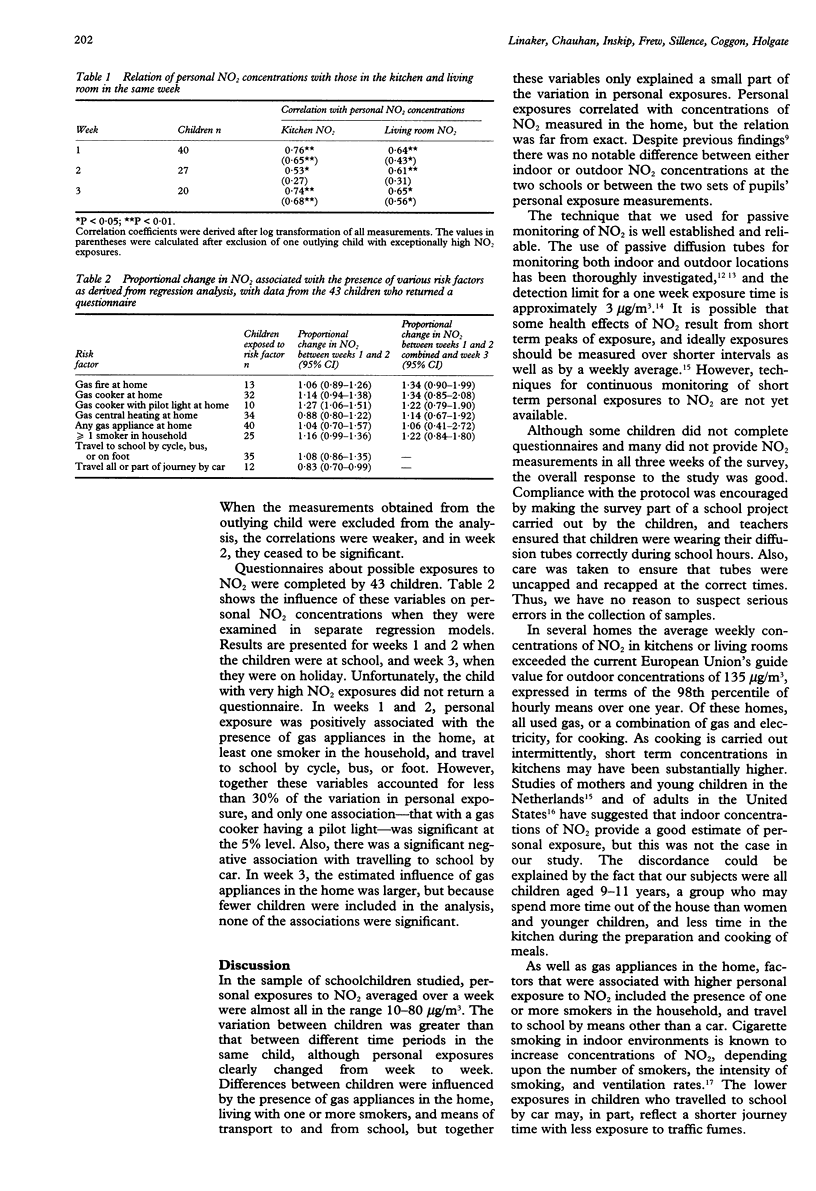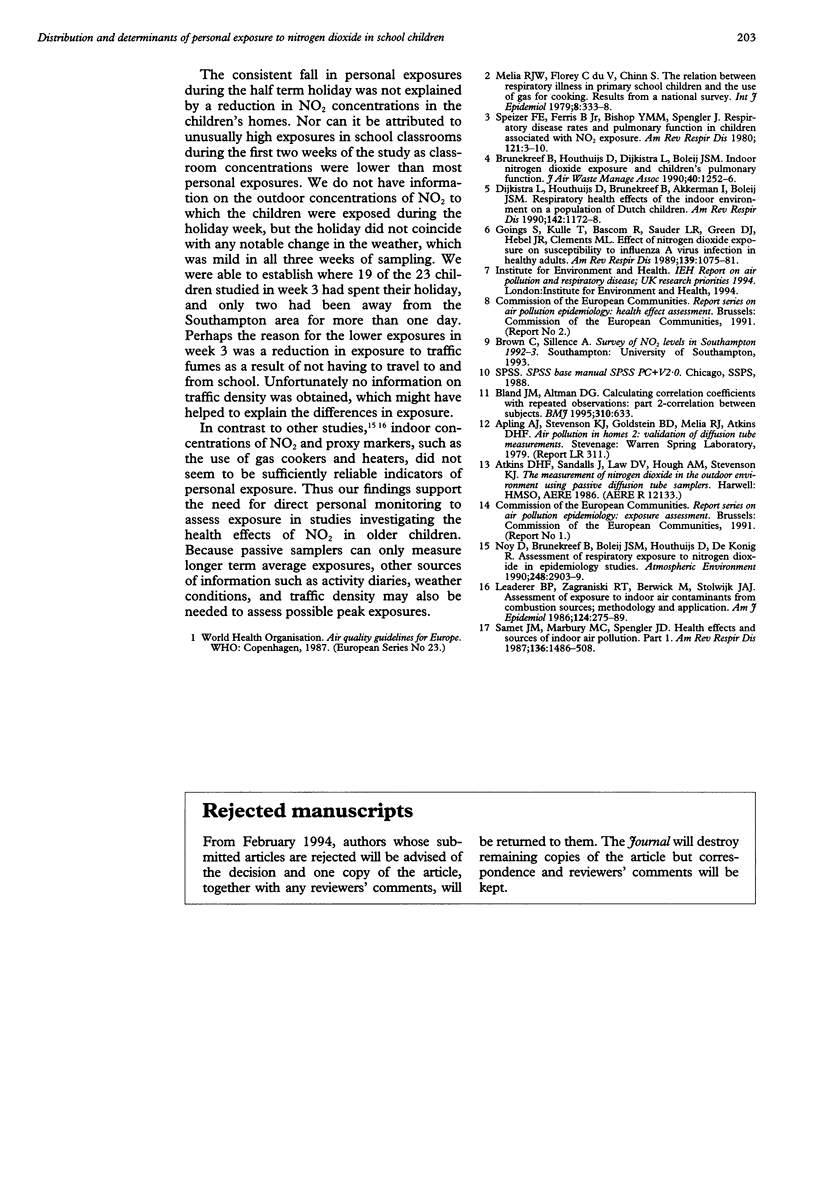Abstract
OBJECTIVES: To assess the distribution of personal exposures to nitrogen dioxide (NO2) in school children, and to investigate factors that might influence personal exposure. METHODS: NO2 exposures were assessed by use of passive diffusion tubes for 46 children aged 9-11 years, selected from two Southampton schools. The tubes were worn for seven days, and parallel measurements were made with static samplers in the child's kitchen, living room, classroom, and playground. Information about potential exposures was collected by questionnaire. RESULTS: Personal exposures to NO2, averaged over seven days, ranged from 11 to 257 micrograms/m3 (6 to 137 ppb) with a geometric mean of 36 micrograms/m3 (19 ppb). Exposures correlated with concentrations of NO2 recorded in the home, but the relation was far from exact. Factors associated with increased personal exposure included the use of gas appliances in the home, living with one or more smokers, and travel to school by means other than a car. However, together these variables only explained a small part of the variation in personal exposures. CONCLUSIONS: These findings reinforce the need for personal monitoring of exposure in studies investigating potential health effects of NO2 in children.
Full text
PDF



Selected References
These references are in PubMed. This may not be the complete list of references from this article.
- Bland J. M., Altman D. G. Calculating correlation coefficients with repeated observations: Part 2--Correlation between subjects. BMJ. 1995 Mar 11;310(6980):633–633. doi: 10.1136/bmj.310.6980.633. [DOI] [PMC free article] [PubMed] [Google Scholar]
- Brunekreef B., Houthuijs D., Dijkstra L., Boleij J. S. Indoor nitrogen dioxide exposure and children's pulmonary function. J Air Waste Manage Assoc. 1990 Sep;40(9):1252–1256. doi: 10.1080/10473289.1990.10466779. [DOI] [PubMed] [Google Scholar]
- Dijkstra L., Houthuijs D., Brunekreef B., Akkerman I., Boleij J. S. Respiratory health effects of the indoor environment in a population of Dutch children. Am Rev Respir Dis. 1990 Nov;142(5):1172–1178. doi: 10.1164/ajrccm/142.5.1172. [DOI] [PubMed] [Google Scholar]
- Goings S. A., Kulle T. J., Bascom R., Sauder L. R., Green D. J., Hebel J. R., Clements M. L. Effect of nitrogen dioxide exposure on susceptibility to influenza A virus infection in healthy adults. Am Rev Respir Dis. 1989 May;139(5):1075–1081. doi: 10.1164/ajrccm/139.5.1075. [DOI] [PubMed] [Google Scholar]
- Leaderer B. P., Zagraniski R. T., Berwick M., Stolwijk J. A. Assessment of exposure to indoor air contaminants from combustion sources: methodology and application. Am J Epidemiol. 1986 Aug;124(2):275–289. doi: 10.1093/oxfordjournals.aje.a114386. [DOI] [PubMed] [Google Scholar]
- Melia R. J., Florey C. V., Chinn S. The relation between respiratory illness in primary schoolchildren and the use of gas for cooking--I. Results from a national survey. Int J Epidemiol. 1979 Dec;8(4):333–338. doi: 10.1093/ije/8.4.333. [DOI] [PubMed] [Google Scholar]
- Speizer F. E., Ferris B., Jr, Bishop Y. M., Spengler J. Respiratory disease rates and pulmonary function in children associated with NO2 exposure. Am Rev Respir Dis. 1980 Jan;121(1):3–10. doi: 10.1164/arrd.1980.121.1.3. [DOI] [PubMed] [Google Scholar]


